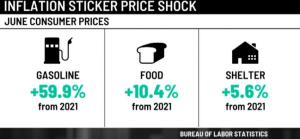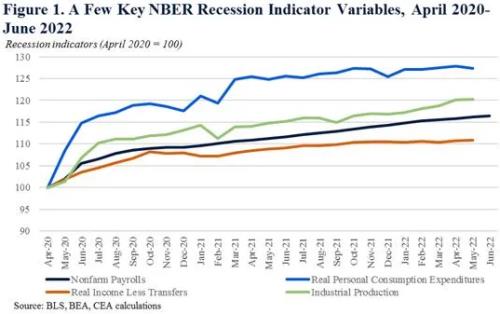 The status of the economy, including employment, consumer confidence and interest rates all have an impact on the egg-production industry. Household budgets in some demographics will exclude red meat in favor of chicken and eggs as a source of protein, maintaining demand at a time when discretionary purchases of groceries and other household items will be constrained.
The status of the economy, including employment, consumer confidence and interest rates all have an impact on the egg-production industry. Household budgets in some demographics will exclude red meat in favor of chicken and eggs as a source of protein, maintaining demand at a time when discretionary purchases of groceries and other household items will be constrained.
Economists are divided as to whether the U.S. economy has entered a recession. Gross domestic product (GDP) fell by 1.6 percent year-over-year during the first quarter and then declined 0.6 percent in the second quarter. Generally, two consecutive quarterly declines in gross domestic product signal a recession. The National Bureau of Economic Research takes into account the GDP but also the gross domestic income (GDI) and other metrics, including personal income, industrial production, retail sales and employment to retrospectively determine whether our economy has entered into recession. The rise in GDI, that attained 1.8 percent in the first quarter and 1.4 percent in the second quarter, counters the sentiment that we are currently in a recession. The uncertainty using the two indicators may be due to the fact that the GDI is reported one month later than the GDP.

Economists commenting on the current economy appear to be ambivalent in the absence of definitive metrics. Jack Kleinhenz of the National Retail Federation, notes, “ongoing inflation, the volatile stock market and other issues are contributing to the debate on whether the economy is in recession”. From his perspective, Kleinhenz stated, “While consumers have become more cautious and cooled their spending in the first half of 2022, households continue to spend and are contending with inflation by using credit cards, saving less and drawing down on savings built up during the pandemic.”
The August non-farm payroll was up 315,000, although the unemployment rate was fractionally higher at 3.7 percent. Hourly earnings increased by 5.2 percent from August 2021. The major growth sectors were services, healthcare and retail. Despite conflicting data, labor statistics and the GDI imply that the Federal Reserve could engineer a soft landing that would be beneficial to our economy and to our industry.
 |
There will be more certainty on the status of our economy at the end of the month when the Bureau of Economic Affairs releases revisions including the GDP and GDI. This should provide data on whether the economy actually entered a recession in the first half of 2022. Irrespective of the outcome the egg industry will have to contend with HPAI, make capital investment decisions on transition to cage-free housing and respond to fluctuating ingredient prices. On the demand side, high employment and wage rates as influenced by future interest rate decisions by the Federal Reserve should support volume and unit revenue for eggs and products.